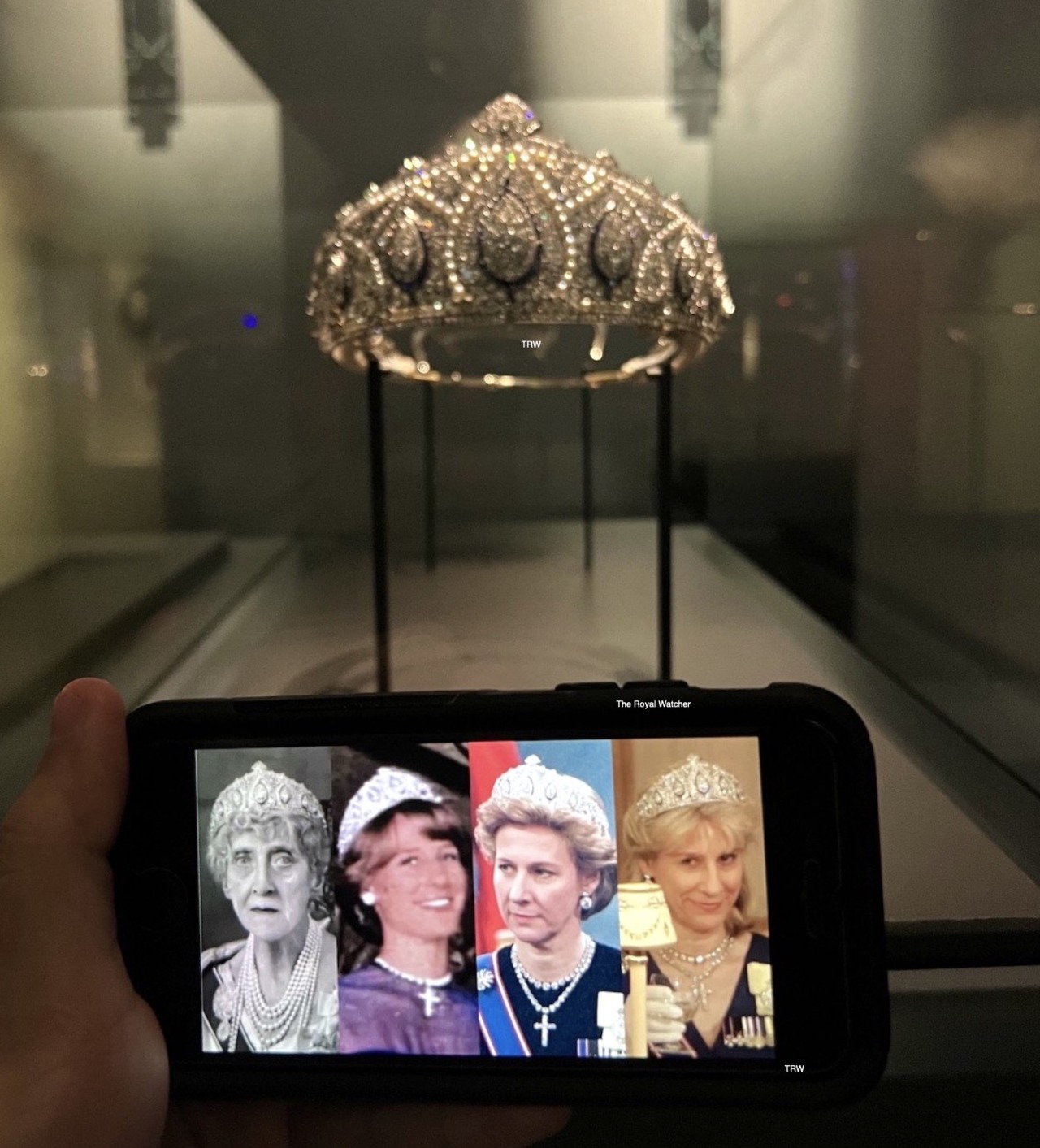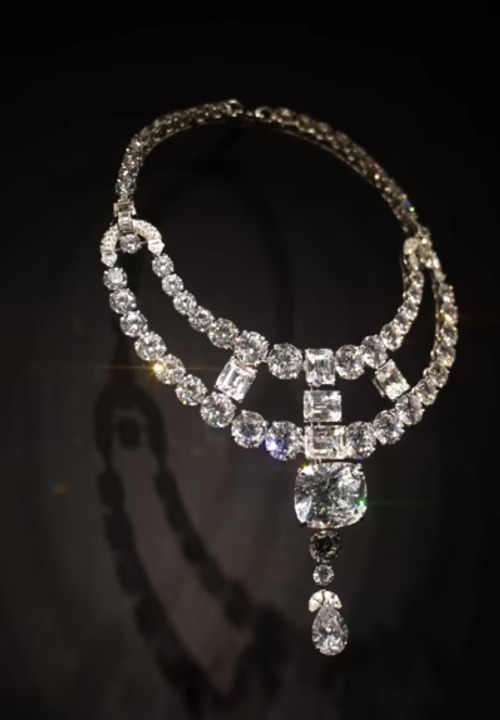Today is the official opening of the highly-anticipated Cartier Exhibition at the Victoria & Albert Museum in London. We will have a in-depth look at the over 350 objects on display in a few weeks, but today, we are featuring the iconic Jewels from Royal and Noble Collections on display in the Cartier Exhibition!


The Victoria & Albert Museum has a most spectacular collection of jewels in their permanent collection but has brought together Jewels created for Royalty in Britain, India, Belgium, Monaco, Greece, Russia, and Romania for this Cartier Exhibition:
Featuring more than 350 objects, the exhibition charts the evolution of the house’s legacy of art, design and craftsmanship since the turn of the 20th century. It was at that point that the three grandsons of founder Louis-François set out to create the first globally recognised jewellery house, establishing branches in Paris, London and New York.



With an enviable client list of royalty and aristocracy, Cartier became known as ‘the jeweller of kings and the king of jewellers’ and later broadened its appeal thanks to the devotion of leading creatives from the worlds of cinema, music and fashion





Exhibition curators Helen Molesworth and Rachel Garrahan, said:
Cartier is one of the most famous jewellery houses in the world. This exhibition will explore how Louis, Pierre and Jacques Cartier, together with their father Alfred, adopted a strategy of original design, exceptional craftmanship and international expansion that transformed the Parisian family jeweller into a household name.



With its world-class jewellery collection, the V&A is the perfect stage to celebrate the pioneering achievements of Cartier and its transformative ability to remain at the centre of culture and creativity for more than a century. We are excited to be able to share with visitors some of Cartier’s most famous creations as well as revealing previously unseen objects and archive material that further enriches our understanding of a jewellery house that continues to influence the way we adorn ourselves today.”


King Charles III and Queen Camilla have loaned the late Queen’s iconic Williamson Pink Diamond Brooch, which was created by Cartier in London in 1953 and worn twice by Queen Camilla last year.




King Charles III has also loaned a striking Art Deco Aquamarine and Diamond Brooch and a pair of Cartier Ruby and Diamond Floral Clips belonging to the late Queen Mother.


Princess Anne has loaned her striking Cartier Aquamarine Pineflower Tiara which had been given by King George VI gave Queen Elizabeth in 1948 and given as a Wedding Gift to Princess Anne 25 years later. It was last worn in December 2024.


The Duke and Duchess of Gloucester have loaned the magnificent Cartier India Tiara, which was created by Cartier in the 1920s, being acquired by Princess Marie Louise by the 1930s before being inherited by the Duke of Gloucester in 1956. The Tiara was last worn in June 2024.


The Cartier Collection acquired Princess Margaret’s iconic Cartier Rose Brooch, which she notably wore for the Coronation of her sister, Queen Elizabeth II, in 1953, at the 2006 Auction of her Jewels at Christies.


The Princely Family of Monaco have loaned Princess Grace’s iconic Bains de Mer Tiara from 1956 and her Cartier Diamond Engagement Ring.


Another Jewel on display seems to be the Cartier Diamond Bracelet set with the legendary Star of the South Diamond, which belonged to the Maharajas of Baroda for over a century before appearing Sheikha Moza of Qatar at the Wedding Banquet of Crown Prince Hussein of Jordan in 2023.



The Duchess of Windsor was one of Cartier’s most notable clients, with several of her iconic Cartier Jewels on dispel, which include her Flamingo brooch, several of her Cartier Panther pieces, her Amethyst Bib Necklace and her Pearl Necklace.


One of the most iconic pieces in the Cartier collection is Queen Elisabeth’s Cartier Bandeau Tiara, which was created in 1910 and sold back to Cartier by the Princess de Réthy in the 1980s.


The magnificent Cartier Olive Wreath Tiara was a Wedding Gift to Princess Marie Bonaparte, Princess George of Greece and Denmark in 1907 and now belongs to the Albion Art Institute.


The massive 478.68-carat Cartier Sapphire Pendant of Queen Marie of Romania later belonged to Queen Frederica of Greece, being auctioned off in 2003, but has been exhibited at several Cartier exhibitions in recent years.


One of the most exciting pieces on display is Grand Duchess Victoria Melita’s Cartier Sapphire Necklace, which later belonged to her niece, Queen Elisabeth of Greece, which has only been seen once since the 1950s.


The striking Cartier Lotus Halo Tiara was created for Princess Andrée Aga Khan in 1934, being sold off by her son in 1976 and more recently being worn by Emma Corrin on the cover of ELLE for May 2025.


Cartier created several spectacular jewels for the Indian Maharajas, one of the most iconic pieces being the magnificent Cartier Diamond Necklace and Choker created for the Maharaja of Patiala in 1928.




Cartier had an important partnership with Maharaja Digvijaysinhji of Nawanagar, with several of his pieces on display, including the iconic ‘Toussaint’ Diamond Necklace used in Ocean’s 8, an Art Deco Ruby and Diamond Necklace, and a Tiger’s Eye Turban Ornament.



One of the biggest surprises in the exhibit is the stunning Devonshire Cartier Opal Necklace Tiara, which has been exhibited for the first time. The piece was often worn as a Tiara and as a Necklace by Mary, Duchess of Devonshire, the first Mistress of the Robes of the late Queen.


The magnificent Cartier Manchester Tiara is one of the most iconic pieces in the collection of the Victoria and Albert Museum, created for the Duchess of Manchester in 1903 and has been on display at the Victoria and Albert Museum since 1988.


The Cartier Essex Tiara is one of the most iconic pieces from the Cartier Collection, which was created for Adele, Countess of Essex in 1902.

This magnificent Emerald and Diamond Necklace created by Cartier in 1932 for the Marchioness of Bute, and is now a part of the Cartier Collection, which we have seen in Dallas and Abu Dhabi in recent years.

The Mountbatten Cartier Tutti Fruiti Bandeau made for the infamous Edwina, Countess Mountbatten is also on display, which is part of the permanent collection of the Victoria & Albert Museum.

‘Edwardians: Age of Elegance’




